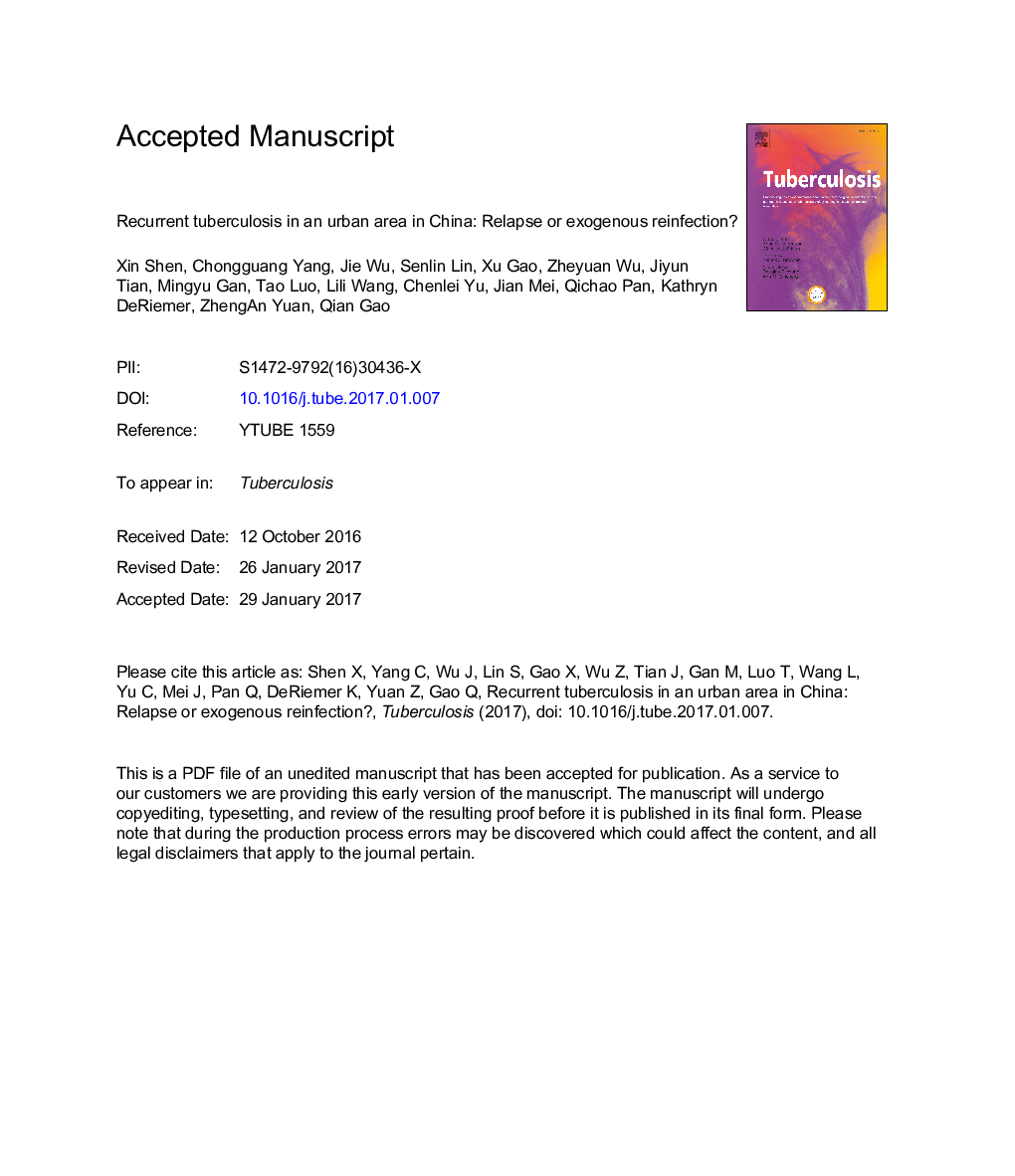| Article ID | Journal | Published Year | Pages | File Type |
|---|---|---|---|---|
| 5536220 | Tuberculosis | 2017 | 34 Pages |
Abstract
Recurrent tuberculosis is an important indicator of the effectiveness of tuberculosis control and can occur by relapse or exogenous reinfection. We conducted a retrospective cohort study on all bacteriologically confirmed tuberculosis cases that were successfully treated between 2000 and 2012 in Shanghai, an urban area with a high number but a low prevalence rate of tuberculosis cases and a low prevalence of HIV infection. Genotyping the Mycobacterium tuberculosis from clinical isolates was used to distinguish between relapse and reinfection. In total, 5.3% (710/13,417) of successfully treated cases had a recurrence, a rate of 7.55 (95% CI 7.01-8.13) episodes per 1000 person-years, more than 18 times the rate of tuberculosis in the general population. Patients who were male, age 30-59, retreatment cases, had cavitation, diabetes, drug-resistant or multidrug-resistant tuberculosis in their initial episode of tuberculosis, were at high risk for a recurrence. Among 141 recurrent cases that had paired isolates, 59 (41.8%) had different genotypes, indicating reinfection with a different strain. Patients who completed treatment were still at high risk of another episode of tuberculosis and exogenous reinfection contributed a significant proportion of the recurrent tuberculosis cases. Targeted control strategies are needed to prevent new tuberculosis infections in this setting.
Keywords
Related Topics
Life Sciences
Immunology and Microbiology
Applied Microbiology and Biotechnology
Authors
Xin Shen, Chongguang Yang, Jie Wu, Senlin Lin, Xu Gao, Zheyuan Wu, Jiyun Tian, Mingyu Gan, Tao Luo, Lili Wang, Chenlei Yu, Jian Mei, Qichao Pan, Kathryn DeRiemer, ZhengAn Yuan, Qian Gao,
